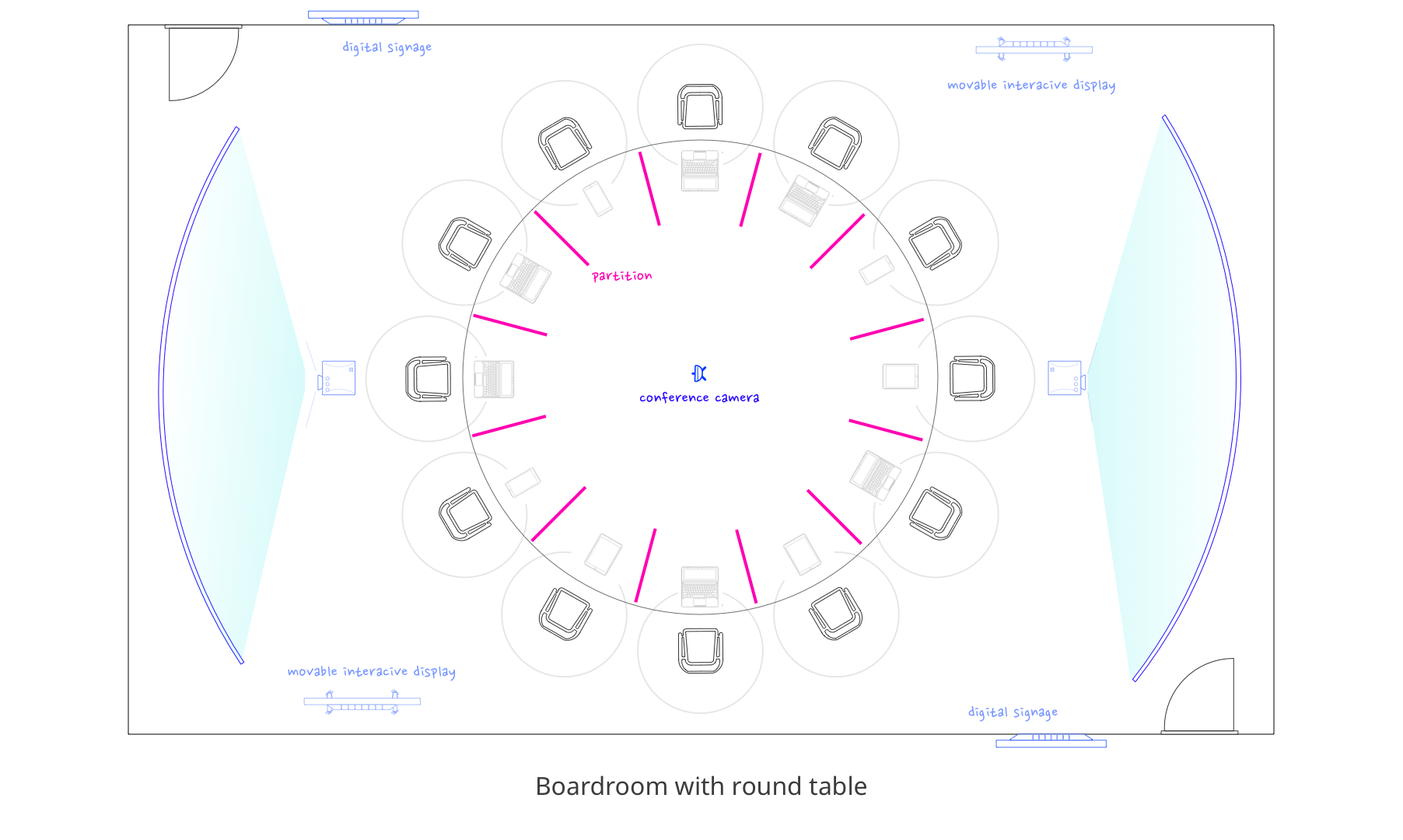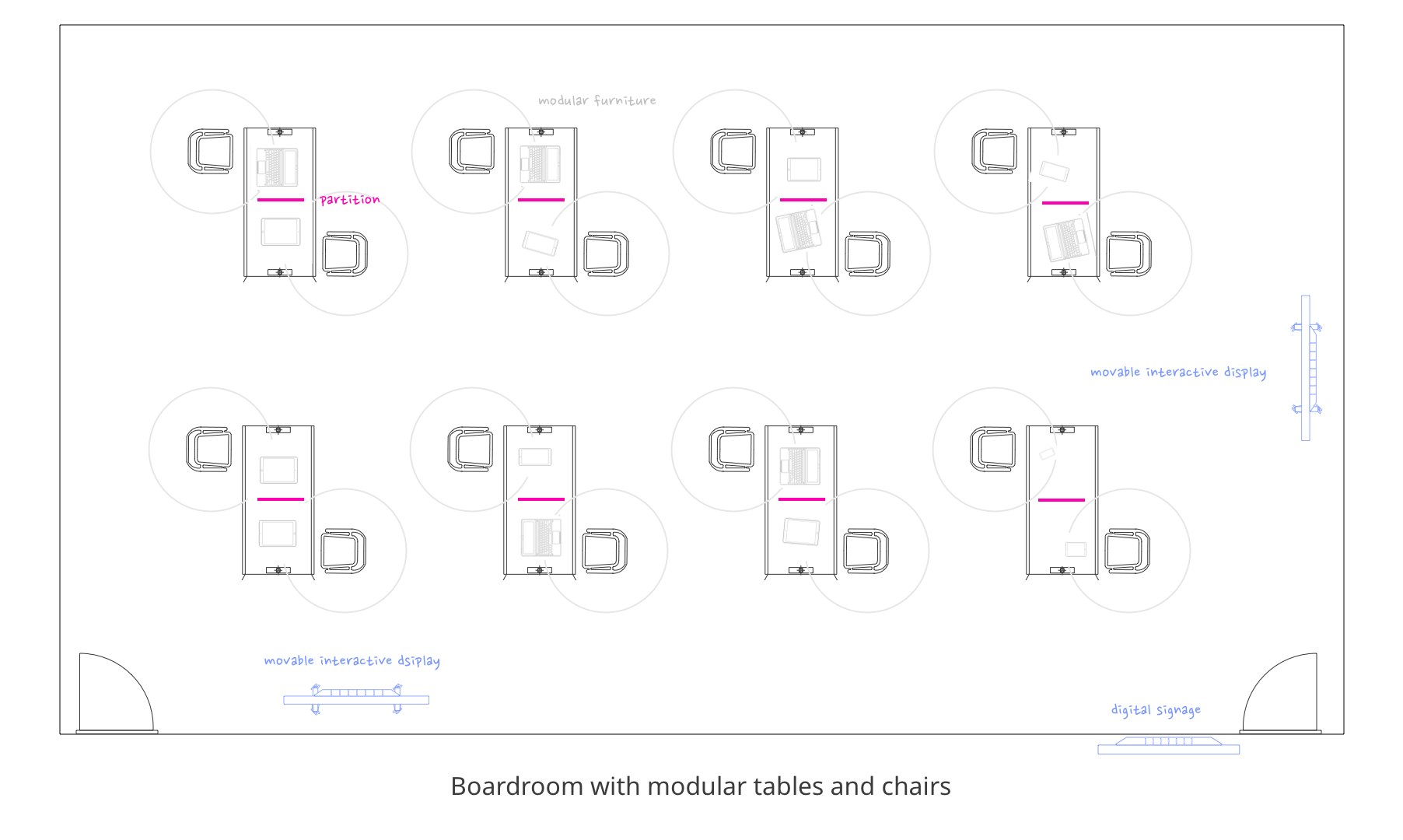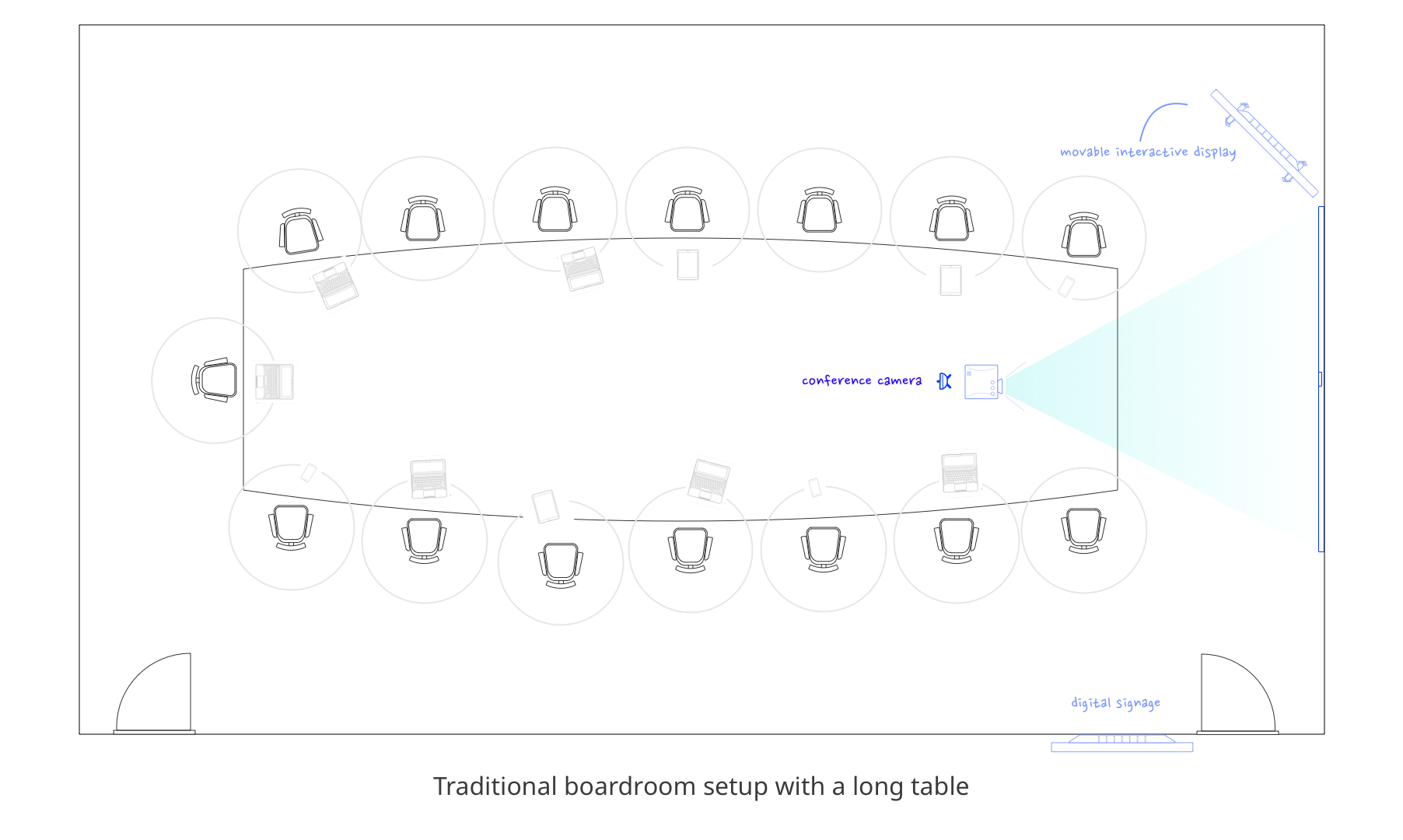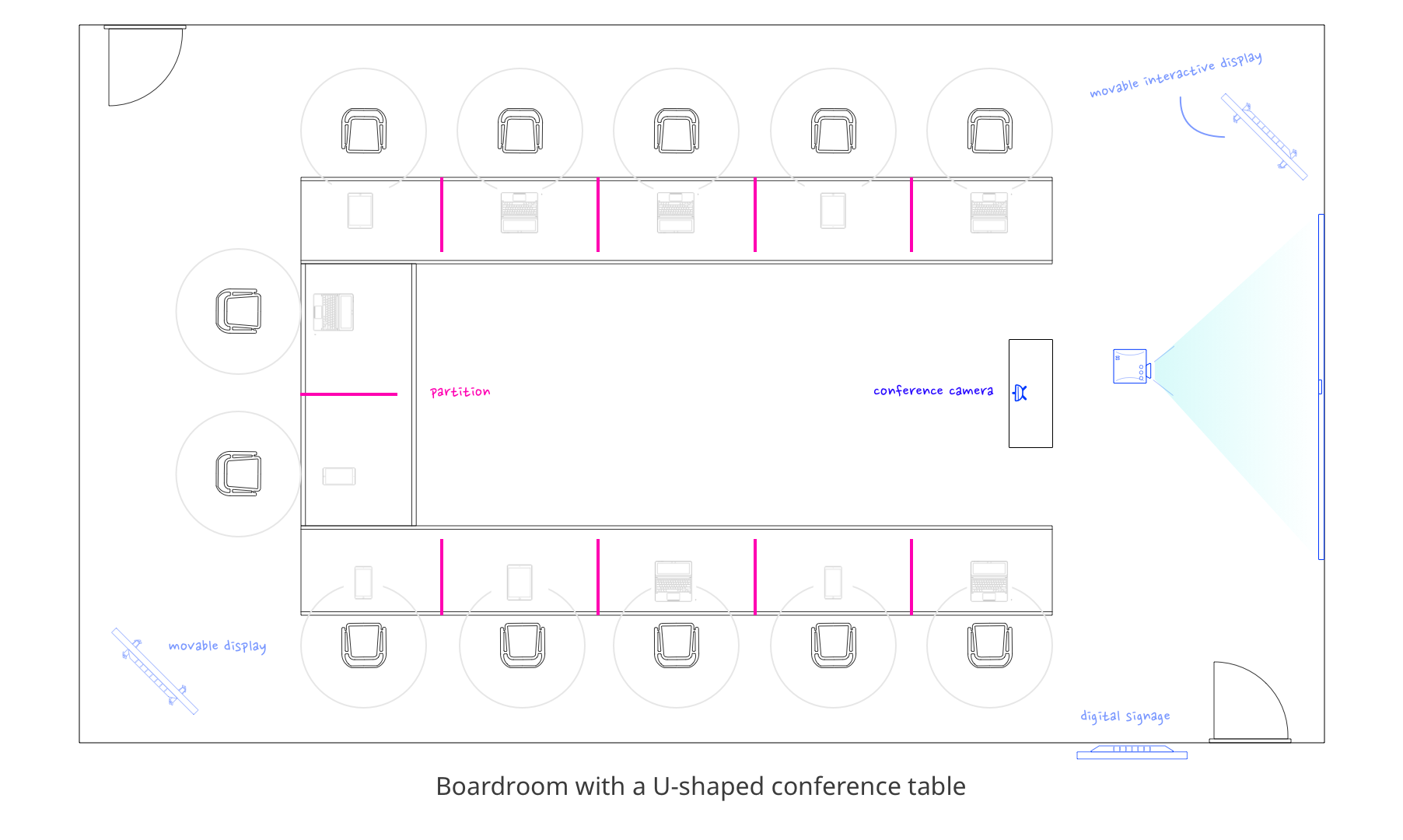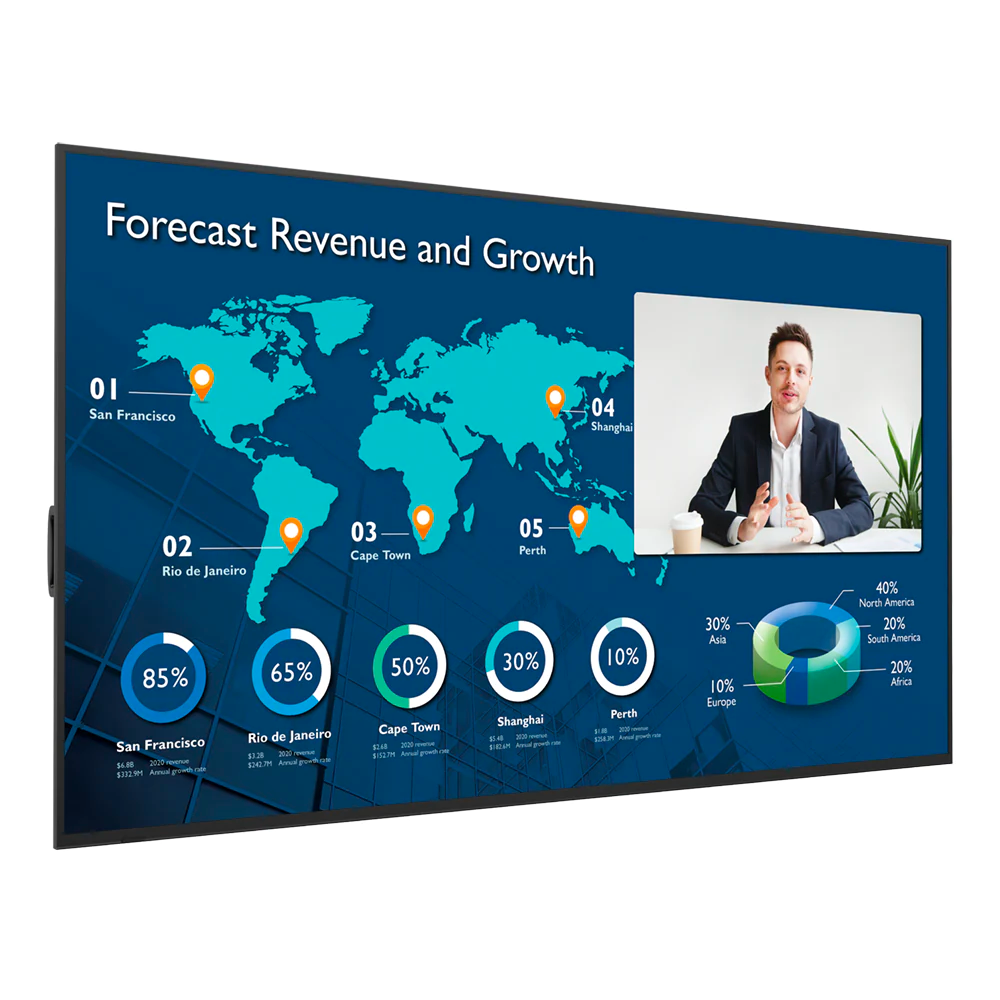Shifting Spaces: The Borderless Boardroom
- BenQ Business
- 2021-07-14

Even the most well-prepared companies with contingency plans were thrown a curveball when the pandemic hit. Operations careened to a halt, affecting revenue, stock prices, and corporate transactions.[1] Office spaces needed to be emptied or downsized.[2,3] Layoffs were on the table.[4,5] It was a crucial time for top-level decision makers. C-level officers needed to act fast based on the guidance of their board of directors.
Normally, these types of discussions are reserved for quarterly reviews—scheduled meetings where the top brass physically convene in private boardrooms to deliberate the current state and future direction of their organization. But with the urgency and restrictions brought about by the pandemic, board meetings had to be called immediately and remotely, introducing what has now become the new normal for higher management meetings.[6,7]
A serious shift to video calls
Typical boardrooms are large office spaces reserved for periodical meetings by board members. These important assemblies happen at least once a quarter. For most of the year, these spaces are utilized by employees to either host meetings with key stakeholders and potential clients visiting the site, or hold regular department sync ups with different functional teams.
All of these gatherings were mostly done face-to-face, so the need for any special equipment, aside from a projector or large-format display, was not really necessary. Presenters only had to bring their laptops to share content with the rest of the attendees. But as companies adopt a more flexible, hybrid style of working, meeting participants are no longer confined to the physical walls of the boardroom.[8] A considerable amount of personnel is now joining discussions off-site. This requires rooms to be set up in a way that would make them more conducive for highly interactive video conferencing.
Prior to the pandemic, calls with remote peers were often done via VoIP (voice over internet protocol) systems—meeting room tools that facilitated audio conferencing over the internet.[9] If visual aids had to be presented, it was done through the screen-sharing functions of web conferencing apps like Zoom, Skype, and the like. With many companies now pivoting to allow more home-based work, seeing remote peers during hybrid meetings has become a must.
For this reason, organizations need to take stock of the tools they currently have installed in their boardrooms. Are they sufficient to facilitate different types of large-scale meetings in a hybrid working setup?

Upholds professionalism
Turning on the camera, even briefly at the start of meetings, allows colleagues to present themselves in a professional manner.

Strengthens work relationships
To offset the lack of physical interaction, seeing your co-workers fosters a social connection that can only be established with video.

Keeps employees focused
Turning the camera on adds a layer of accountability, preventing attendees from shifting their attention to other matters.
Futureproofing the boardroom
What separates contemporary meeting solutions from their predecessors is the scalability and amount of interactivity they offer.[12] For example, technologies such as interactive displays with integrated cloud whiteboards give multiple remote users the ability to collaborate in the same space at the same time. This guarantees that all parties are actively engaged during sessions. Presentations are also no longer just one-way. Stakeholders can give live feedback and may even edit content directly whether they’re in the same boardroom or working from a remote location.
Below is a comparison of how today’s standard boardrooms with basic web conferencing stack up against their futureproof hybrid counterparts.
Basic
Standard boardrooms are fitted with static whiteboards or flip charts as well as basic presentation and web conferencing technologies such as a regular projector and a VoIP system.
Interactive
Hybrid boardrooms are equipped with smart devices that foster real-time coworking between office-based and remote peers. These include interactive displays with cloud whiteboarding and video conferencing setups.
Limited interaction
Those physically present in the boardroom are more active in discussions, while remote peers joining via voice calls are occasionally solicited for their feedback.
Higher engagement
Since all participants are both audible and visible via their live video feeds, they can engage with each other freely as if they were all in the same room.
Limited whiteboarding
Unless there’s a camera directly pointed at the whiteboard or flip chart, all contents added to the board or sheet can only be seen by those who are physically inside the boardroom.
Collaborative cloud whiteboarding
With all participants looking at and working on the same cloud whiteboard, not only can they all see the content, but they can also modify items in real time.
Limited recording
Sessions can be recorded as audio or video files and then sent to participants after the meeting. Any notes added to a physical whiteboard or flip chart are lost.
Convenient recording and sharing
Sessions can be instantly exported and sent to all attendees. These files may include cloud whiteboard sessions that can still be edited and further developed at a later time.
Fixed layout
Boardrooms with fixed, bulky furniture limit the number of people that can fit the room. They also take longer to reconfigure in case special requirements like social distancing need to be implemented.
Flexible layout
Boardrooms fitted with modular furniture as well as moveable displays and cameras allow for better utilization of the room. Teams can quickly reconfigure the space to fit their meeting requirements.
As several organizations adopt different hybrid working models, they have begun turning their offices into leaner, more efficient workspaces. Meeting rooms are becoming more and more interactive—a change that will also be reflected in boardrooms. Whether it’s a complete redesign or just an upgrade of existing boardroom technologies, it’s important for organizations to factor in real-time interactivity between in-office and remote peers and stakeholders. Flip through the gallery to see some simple and advanced ways you can improve your current boardrooms using BenQ meeting solutions.
Meeting solutions


All rooms concepts and designs are by the BenQ Lifestyle Design Center UX team.
- Jones, L., Palumbo, D., and Brown, D., “Coronavirus: How the pandemic has changed the world economy”, BBC News, https://www.bbc.com/news/business-51706225, 24 January 2021, last accessed 28 May 2021.
Grant, P., “After Covid-19, Office Leases Largely Come With Bargain Rates”, The Wall Street Journal, https://www.wsj.com/articles/after-covid-19-office-leases-largely-come-with-bargain-rates-11617701423, 6 April 2021, last accessed 28 May 2021.
Thomas, D., “How the pandemic will change the City office”, Financial Times, https://www.ft.com/content/a399c208-7027-4138-abbf-6c08ef818a44, 3 January 2021, last accessed 28 May 2021.
Tappe, A., “Record 20.5 million American jobs lost in April. Unemployment rate soars to 14.7%”, CNN, https://edition.cnn.com/2020/05/08/economy/april-jobs-report-2020-coronavirus/index.html, 8 May 2020, last accessed 28 May 2020.
Tappe, A. and Yellin, T., “These 5 charts show the pandemic's brutal impact on American workers”, CNN, https://edition.cnn.com/2021/03/11/economy/pandemic-job-market/index.html, 11 March 2021, last accessed 28 May 2021.
“Frank Discussions: Phyllis Campbell, Chairman, Pacific Northwest, JP Morgan Chase & Co.”, YouTube, uploaded by University of Washington Foster School of Business, 7 May 2020, last accessed 28 May 2021.
Paine, L., “Covid-19 Is Rewriting the Rules of Corporate Governance”, Harvard Business Review, https://hbr.org/2020/10/covid-19-is-rewriting-the-rules-of-corporate-governance, 6 October 2020, last accessed 28 May 2021.
Freeland, G., “Will The 3+2 “Hybrid” Workplace Of Home And Office Become The New Norm For Business?”, Forbes, 8 September 2020, last accessed 28 May 2021.
Werbach, K. “Using VoIP to Compete”, Harvard Business Review, https://hbr.org/2005/09/using-voip-to-compete, September 2005, last accessed 28 May 2021.
Frisch, B. and Greene, C., “What It Takes to Run a Great Virtual Meeting”, Harvard Business Review, https://hbr.org/2020/03/what-it-takes-to-run-a-great-virtual-meeting, 5 March 2020, last accessed 28 May 2021.
Moreno, K, “Silver Linings: Key Lessons From How We Communicate In The New Normal”, Forbes, https://www.forbes.com/sites/insights-zoom/2020/11/20/silver-linings-key-lessons-from-how-we-communicate-in-the-new-normal/?sh=2d1b29412784, 20 November 2020, last accessed 28 May 2021.
Preset, A. and Trueman, C., “The Role of Meeting Solutions in the New Work Nucleus”, Gartner, https://www.gartner.com/document/code/450764?ref=authbody&refval=3982154, 24 September 2019, last accessed 28 May 2021.





